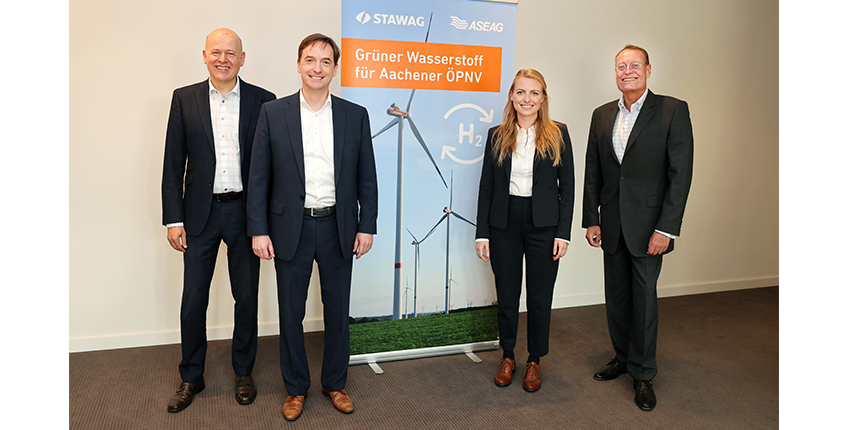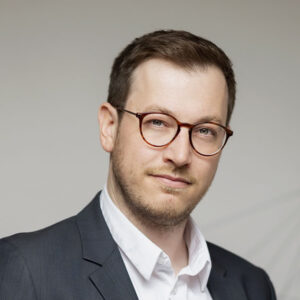Aachen energy supplier STAWAG is entering the field of hydrogen technology: an electrolyser is to be built at the Aachen Nord wind farm, which will generate green hydrogen from wind power. This can be stored and will power buses operated by the Aachen transport company, ASEAG.
An electrolyser with a capacity of around two megawatts is to be built close to the Aachen Nord wind farm, which will break down water into hydrogen and oxygen with the help of the wind power. Filled under pressure into mobile storage tanks, the hydrogen will be transported by towing vehicles to a hydrogen filling station. STAWAG aims to produce around 200 tonnes of green hydrogen per year. The filling station will be built on the ASEAG premises, where fuel cell buses will be refuelled.
“With our 2030 climate targets, we have put together a comprehensive package for a climate-friendly electricity and heat supply. A push for more environmentally-friendly mobility is part of our programme”, explained Dr. Christian Becker, STAWAG management board member. “We are not only focusing on electric mobility – we want to develop and implement more innovations. Our new project couples the electricity and transport sectors and contributes to making renewable energies more flexible.” The hydrogen is to be used exclusively in the region.
“Buses with fuel cells powered by green and locally produced hydrogen can contribute to a further reduction in transport emissions”, says Michael Carmincke, AGEAG management board member. “That’s why we’re pleased to be part of this pilot project.”
This project is only possible with the help of funding: STAWAG submitted a funding application to the Federal Ministry of Transport and Digital Infrastructure (BMVI) and was awarded the contract. STAWAG is receiving funding of around 3.5 million euros, which equates to around 45 per cent of the investment costs. The funds come from the National Innovation Programme for Hydrogen and Fuel Cell Technology (NIP II). ASEAG has submitted the relevant funding applications for the filling stations and fuel cell buses. About 24 months are required in order to plan and construct the entire infrastructure needed. Provided all other funding can be obtained, hydrogen will be produced for Aachen’s public transport for the first time by the end of 2023.
Photo: Frank Brösse, Managing Director STAWAG Energie GmbH, Michael Carmincke, ASEAG management board member, Julia Tienken, STAWAG project manager, and Dr. Christian Becker, STAWAG management board member, (l-r) launch hydrogen project for hydrogen. Photo source: STAWAG/Steindl


